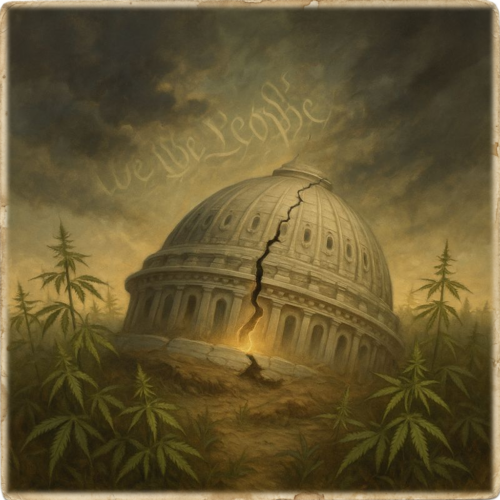Texas House Bill 46, signed into law by Governor Greg Abbott on June 21, 2025, represents the most substantial transformation of the state’s medical cannabis policy since the creation of the Texas Compassionate Use Program (TCUP) in 2015. Taking effect on September 1, 2025, HB 46 expands access, product availability, and the licensing framework, and it positions Texas as the 40th state to implement a more comprehensive medical marijuana program. While Texas medical cannabis still lags behind states with full medical or recreational systems, this shift signals a larger trend of reform taking root in traditionally restrictive regions.
From Restriction to Reform: A Legislative Evolution
Texas’s journey into the realm of medical cannabis began conservatively. TCUP, established through Senate Bill 339 in 2015, was among the most restrictive in the nation. Initially, it limited access to patients with intractable epilepsy and allowed only low-THC products (less than 0.5%). For years, this model served as a case study in symbolic cannabis legislation—acknowledging the plant’s therapeutic potential while offering access to a minuscule portion of eligible patients.
By 2020, only about 3,800 patients were enrolled, despite estimates suggesting over 2 million Texans qualified under expanded interpretations of existing conditions. Even after legislative updates in 2019 and 2021, which added diseases like Parkinson’s, Alzheimer’s, cancer, and PTSD, the program’s low THC cap and geographic concentration of dispensaries continued to stifle growth.
HB 46: Catalyzing Access and Infrastructure
HB 46 overhauls multiple dimensions of TCUP. It expands the list of qualifying conditions to include chronic pain, Crohn’s disease, traumatic brain injury (TBI), terminal illness, and eligibility for hospice care. It also grants authority to the Department of State Health Services (DSHS) to add further qualifying conditions as warranted. Beyond the patient criteria, HB 46 redefines how cannabis products may be delivered. Patients now have access to lotions, patches, suppositories, and non-smoked pulmonary methods such as vaporizers, nebulizers, and inhalers. The outdated THC restriction of 1% by weight is replaced with a more functional dose-based system, allowing up to 10 milligrams of THC per dose with packages capped at one gram. Additionally, the law expands the number of licensed operators from three to fifteen, authorizing each to operate multiple satellite locations aimed at extending access to underserved parts of the state.
These changes mark a transition from a symbolic gesture to something more functional—albeit still tightly regulated.
Political Dynamics and Stakeholder Pressures
The bill’s passage underscored the complex political dynamics surrounding Texas medical cannabis reform. HB 46 was championed by Rep. Ken King (R-Canadian), whose mother’s hospice experience helped personalize the issue. The bill initially passed the House with bipartisan support by a vote of 122-21, bringing together rural Republicans interested in agricultural economic expansion and urban Democrats advocating for medical access.
The Senate, led by State Affairs Chair Charles Perry (R-Lubbock), approached with caution, stripping out key provisions during committee revisions, including chronic pain and TBI. Ultimately, a conference committee compromise reinstated these measures, and both chambers passed the final bill nearly unanimously.
Lieutenant Governor Dan Patrick, typically a hardliner, prioritized THC and hemp restrictions but allowed the medical program to proceed. Governor Abbott vetoed an unrelated THC ban and signed HB 46, signaling a calculated willingness to support measured reform.
Comparative Insights and Economic Modeling
Texas’ reform mirrors the trajectory of other conservative states like Florida and Pennsylvania. Both began with limited programs and gradually expanded access. Florida now serves nearly 900,000 patients, while Pennsylvania supports over 440,000 despite restrictive qualifying criteria.
In Texas, official estimates suggest HB 46 will bring in $5.75 million in state revenue by 2027, primarily through licensing fees. The Department of Public Safety projects an additional $7 million in license renewal fees between 2028 and 2030. Industry observers believe these figures are conservative.
The Texas hemp-derived cannabinoid industry already generates $5.5 billion annually. The expanded Texas medical cannabis program could capture a significant portion of that market, especially as the state begins cracking down on unregulated hemp THC products.
Regulatory Challenges and Structural Bottlenecks
While the law mandates license distribution across Texas’s 11 public health regions, implementation poses logistical concerns. Rural patients still face long travel distances, and although satellite dispensaries may help, the sheer size of the state and underdeveloped infrastructure remain persistent obstacles. Physician participation also represents a hurdle. As of late 2021, only 465 physicians were registered with the program. Expanding qualifying conditions may encourage more providers to enroll, but liability concerns associated with cannabis’s Schedule I classification under federal law continue to discourage widespread medical adoption. Additionally, the law’s vertical integration requirement mandates that licensees control every aspect of the supply chain—from cultivation and processing to testing and dispensing. This model raises the financial barrier to entry, potentially shutting out smaller, independent operators who might otherwise contribute to more localized access.
Public Health Outcomes and Research Gaps
Adding chronic pain to the list of qualifying conditions has both medical and public health implications. Data from other states shows potential reductions in opioid prescriptions when cannabis is available as an alternative, though long-term outcome data remains limited. Concerns around cannabis use disorder and adolescent access continue, but tightly regulated medical programs have shown fewer spillover effects than their recreational counterparts.
Texas does allow Compassionate-Use Institutional Review Boards (CIRBs) to oversee medical cannabis research, but this mechanism remains underutilized. Systematic data collection and integration with the Prescription Monitoring Program could bolster outcome-based policy development—if adequately funded and supported.
Strategic Implications and Future Trajectories
For advocacy groups, HB 46 represents progress but not resolution. Continued efforts will be required to further expand qualifying conditions, address rural access gaps, and reduce costs for patients. Cannabis operators should use this moment to prepare for competitive licensing rounds, invest in regulatory compliance infrastructure, and establish relationships with the communities they intend to serve. Policymakers will need to follow through on their statutory authority, particularly as it relates to expanding delivery mechanisms and updating qualifying conditions based on emerging medical evidence. Health providers, meanwhile, must receive proper training and education to responsibly integrate medical cannabis into patient care, especially as more patients become eligible.
Texas as a Conservative Bellwether
House Bill 46 provides a model for conservative states navigating the politics of cannabis reform. It marries control with expansion, threading a needle that more liberal states navigated long ago. Whether this serves as a springboard for further reform or a plateau will depend on execution, oversight, and the willingness of Texas officials to let the program evolve beyond its guarded beginnings.

***
Trap Culture is the ultimate destination for cannabis enthusiasts who want to experience the best of Arizona’s cannabis culture. Whether you are looking for the hottest cannabis-friendly events, the latest news on cannabis legalization, trends in the industry and exclusive, limited-edition products from the top brands in the market, Trap Culture has you covered. Visit our website to learn more about our events, our blog, and our store. Follow us on social media to stay updated on the latest news and promotions. Join the Trap Culture family and experience the most immersive and engaging social cannabis events in Arizona.
Follow us on social media




